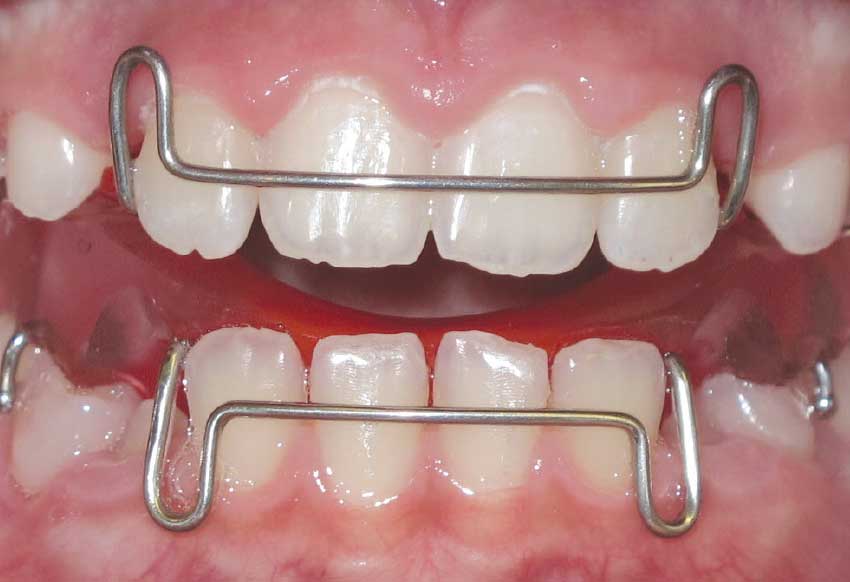
What is interceptive orthodontics?
We might have come across many adolescents wearing braces for correcting the alignment of their teeth. The traditional method focuses on teeth alignment around the age of 10–12, after the appearance of permanent teeth. But interceptive orthodontics starts very early, at the age of 6-10 years, when teeth and jawbones are developing, ensuring correct teeth alignment from the beginning. This treatment does not necessarily include braces.
What is special about interceptive orthodontics?
Interceptive orthodontics is also called two-phase orthodontics. Unlike traditional treatment, it involves giving treatment to children right from the early stage of teeth development. Interceptive orthodontics begins at the stage of development of a child’s primary teeth. The main aim of the treatment is to provide the proper attention to teeth development from the beginning and monitor their growth. It reduces/prevents unnecessary complications of malocclusions (difficulties due to variation in tooth size, spacing between teeth or jaw, incorrect positioning of the teeth).
To know more, you can consult a dentist near you or visit Apollo Dental clinic in Hyderabad.
Who can undergo interceptive orthodontics treatment?
Children aged between 6 and 10 years can undergo this treatment.
Why is interceptive orthodontics treatment conducted?
Interceptive orthodontics aims to limit growth and development-related problems of teeth and jaw. It eliminates the risks of improper positioning and growth of teeth due to crowding and lack of space. This treatment ensures equal spacing of teeth with less variation in their sizes.
How is the treatment conducted?
An X-ray of the jaw helps the doctor identify the position of the teeth. Initially, the doctor explains the details of the treatment in case it is needed. The treatment involves expanding the jaws using a device called an expander. The palatal expander creates more space by widening the jawbones at the early growth stage. It helps the jaw accommodate more teeth, thus doing away with the need for tooth extraction.
Request an appointment at Apollo Dental, Hyderabad. Call 18001020288 to book an appointment.
What are the benefits?
It is always better to understand the need, pros and cons of the treatment before you make a decision.
The benefits of interceptive orthodontics include the following:
- It can correct the position of the protruding teeth.
- It avoids the need for surgery or extraction in the future.
- It provides enough room for tooth development.
- It eliminates chewing problems and speaking issues.
- It helps in the growth of permanent teeth at the correct angle.
- It improves facial symmetry by correcting jaw alignment.
- It boosts the confidence of your kid.
- Finally, it ensures a flawless smile.
What are the risks?
There is no risk involved in the treatment; however, the child may feel a little discomfort while the expander is getting placed. The palatal expander will not hurt the jaw and the child will get used to it within a few days or a week.
Conclusion
Interceptive orthodontics starts very early, at the age of 6–10 years, when teeth and jawbones are developing. It is easy to correct teeth alignment at this stage. This treatment does not necessarily include braces. It reduces the chances of any misalignment during the development of permanent teeth.
For getting the treatment done, you can reach out to the best doctors at Apollo Dental, Hyderabad, at any time.
Interceptive orthodontics is a treatment for correcting the alignment of teeth and jaw at an early stage of teeth growth.
The treatment aims to evaluate, diagnose, prevent and treat dental problems as early as possible.
Children aged between 6 and 10 years can undergo this treatment. This is the time when only primary teeth have developed. The treatment is done before the appearance of permanent teeth.
No. The child will not feel any pain during the procedure. However, they may feel slight discomfort due to the placement of the expander.
Yes, interceptive orthodontics improves facial symmetry. It corrects the teeth alignment at an early stage to make sure the proper jaw placement during the permanent teeth development.
Interceptive Orthodontics Doctors in Hyderabad
BDS, MDS...
| Experience | : | 5+ Years Experience |
|---|---|---|
| Speciality | : | Orthodontics & Dentofacial Orthopaedics... |
| Location | : | Nallakunta |
| Timings | : | On Call... |
















































